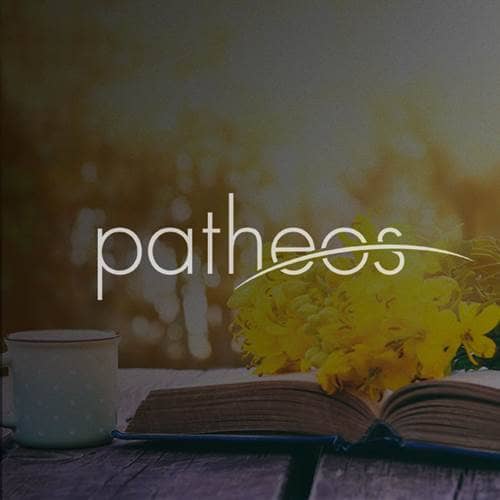- Trending:
- Forgiveness
- |
- Resurrection
- |
- Joy
- |
- Feminism
- |
- Afterlife

RELIGION LIBRARY
ISKCON (Hare Krishna)
Sacred Texts
The International Society for Krishna Consciousness holds all the classical sacred texts of Hinduism in high regard, though it recognizes as most central those texts that directly describe the words or deeds of Krishna, namely the Bhagavata Purana (Bhagavatam) and Bhagavadgita. In lived practice, members of the movement look to the texts authored, translated, or commented upon by founding guru Bhaktivedanta, notably his editions of those sacred texts, but also his other writings. Members of the movement believe that the ancient Hindu revealed texts (shruti), most notably the Vedas, serve as valuable sources and proof texts, but they generally do not employ these materials in their daily lives.
Of the various Hindu texts that ISKCON utilizes, the two most central are the Bhagavadgita and Bhagavata Purana, both central books in the Vaishnava tradition. One of the most read and influential texts in Hinduism more broadly, the Bhagavadgita holds a special place for Krishna's devotees . The Bhagavadgita is the climax of a war described in a much longer epic called the Mahabharata, which narrates a struggle over dynastic succession between two sets of cousins, the Pandavas and Kauravas. The text contains the words of Krishnato his friend and disciple Arjuna, and therefore represents the basis of the entire Vaishnava philosophy.
The Mahabharata describes a complex series of events in which Krishna allied himself with the Pandavas, and particularly Arjuna, who is also Krishna's cousin and brother-in-law. When the two sides have finally amassed for war, Arjuna turns to his friend and charioteer Krishna and asks for guidance, feeling unable to commit to violence against his kin. In response, Krishna offers a set of teachings about the nature of the cosmos, human life, karma, and reincarnation, and the means by which a person may achieve transcendence. In particular, Krishna teaches a system of yogas(disciplines) by which individuals master themselves and their actions. Finally, Krishna reveals himself in his universal form as God.
ISKCON devotees, like all Gaudiya Vaishnavas, look to one particular yogic method, that of bhakti yoga (devotional yoga) as the core philosophy and practice of their movement. The approach of bhakti yoga originates in the Bhagavadgita, specifically its ninth chapter. For ISKCON, Krishna's words to Arjuna that, "if one offers to me with love and devotion a leaf, a flower, fruit or water, I will accept it," (Bhagavadgita 9:26) make devotional offerings central to the movement's worship. As practitioners of bhakti yoga, ISKCON devotees engage in many forms of devotion, including song, dance, food offerings, and ritual worship.
The Bhagavatam holds an equally important place for members of ISKCON, since this multi-volume text describes the pastimes in which Krishna engaged during his earthly incarnations. The text chronicles the avatar forms that Vishnu has taken throughout time, with special attention to that of Krishna, whom ISKCON devotees understand as the ultimate name and personality of Vishnu. The tenth book details the life of Krishna himself, particularly his playful pastimes (lila), which include his childhood and relationship with his mother, his youthful adventures of fighting demons and saving innocents, his playful games with friends and companions, and his loving play with the gopis, the cowherd girls who most commentators interpret as representing the ideal devotees.
ISKCON devotees utilize the Bhagavatam as a source of inspirational stories about Krishna, particularly as a guide in how to relate to God. Since the text describes Krishna's various relationships, it offers multiple examples of how a person might show devotion to him. For example, devotees seek to follow the example of the gopis, who followed Krishna's every move and request, sometimes ignoring social strictures to do so. This intense devotionalism provides one basis for ISKCON's willingness to ignore Western social and religious conventions.
Though numerous translations and editions of these texts exist, ISKCON members exclusively utilize those produced by their movement's founder A.C. Bhaktivedanta Swami Prabhupada, which they consider the most accurate and edifying versions. Bhaktivedanta's translations of the two texts also contain extensive commentary, material that is almost as valuable to ISKCON members as the ancient text itself, since they understand Bhaktivedanta's commentary as offering the means by which modern people can understand these ancient writings.
Bhaktivedanta's translation and commentary of the Bhagavadgita, published as The Bhagavad-Gita As It Is, is the single book that nearly every ISKCON devotee has read, and in many cases it has served as an entrée into the movement. During the late 1960s and 1970s, ISKCON devotees often distributed the text on college campuses, at airports, and in public parks. They engaged in this practice as a form of sankirtan, or public spreading of Krishna Consciousness, as well as a means of gaining donations to support their cause. Printings of Bhaktivedanta's translations of Bhagavatam, including Krsna (an excerpt of the longer work) and the complete Srimad-Bhagavatam also served the same function.
Though ISKCON devotees do not consider them sacred texts per say, the collected writings, lectures, and notes produced by Prabhupada and his direct disciples serve as guides to the practice of Krishna Consciousness. The Bhaktivedanta Book Trust has published several hundred editions in numerous languages of these texts in paper and digital formats, and the study of them -- along with Bhaktivedanta's translations of the Gaudiya sacred texts -- occupies an important part of the lives of many devotees.
Study Questions:
1. What scriptures have authority to the followers of ISKCON?
2. Describe the plot of the Bhagavadgita and the Mahabharata. Why are they important to ISKCON followers?
3. What is the Bhagavatam? How is it used?
4. What was Bhaktivedanta's role in the spreading of these texts?










